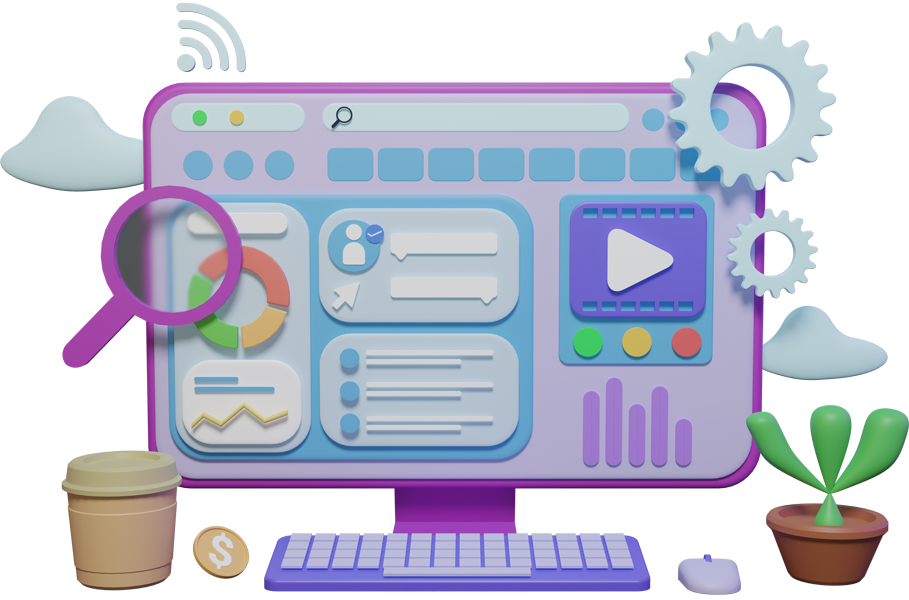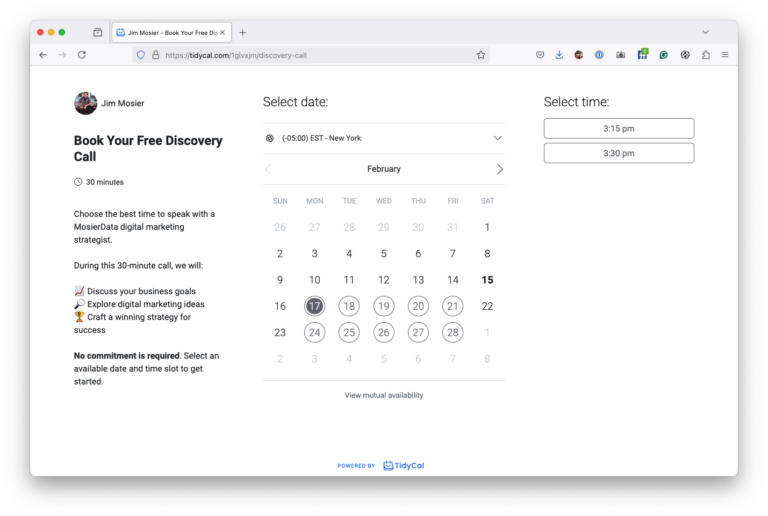When you’re aiming to enhance your PPC campaigns, mastering audience segmentation can be a game-changer. Consider leveraging geographic targeting for local outreach or demographic segmentation for age-specific offerings. Plunge into interest-based segmentation for niche markets, or use behavioral targeting to reignite interest with retargeting. Each strategy has its unique benefits and can optimize your ad spend. Curious to know how these tactics can transform your marketing efforts? Let’s explore.
When it comes to driving foot traffic and increasing sales, local businesses can substantially benefit from geographic targeting in their PPC campaigns. You can focus your ads on specific areas where your potential customers are located, ensuring your marketing efforts reach the right audience. By narrowing your target to a city, zip code, or even a neighborhood, you optimize your ad spend and avoid wasting resources on uninterested users.
You’ll increase the likelihood of attracting customers who are more likely to visit your store or use your services. Additionally, you can tailor your messaging to resonate with local events or interests, making your ads more relevant. Geographic targeting empowers you to compete effectively in your local market, maximizing ROI.
Tapping into demographic segmentation can really set your PPC campaigns apart, especially for age-specific products. When you tailor ads to specific age groups, you guarantee that your message resonates with the right audience. Consider products like anti-aging creams or teen apparel.
By segmenting by age, you can craft targeted messages that speak directly to the needs and desires of those age groups. This not only improves click-through rates but also boosts conversion rates.
To start, analyze the age demographics of your current customers. Use tools like Google Ads to create segmented campaigns. Tailor your ad copy and visuals to match the interests and lifestyles of your target age group. Remember, understanding your audience’s age-specific needs will help you deliver more personalized and effective ads.
Interest-based segmentation accesses the potential of niche markets, allowing you to target audiences with specific passions and hobbies. By focusing on interests, you can tailor your PPC campaigns to resonate with individuals who are genuinely interested in your products or services. Start by identifying the unique interests of your ideal customers. Use platforms like Google Ads or Facebook Ads, where you can select interest categories that align with your niche.
Create compelling ad creatives that speak directly to these interests. This approach can lead to higher engagement and conversion rates because you’re connecting with people who already have a vested interest. Monitor your campaigns closely, adjusting as needed to guarantee you’re reaching the right audience segments. This precision targeting helps maximize your ad spend efficiency.
Having explored the benefits of interest-based segmentation, let’s now focus on behavioral targeting for retargeting campaigns. By honing in on users’ past actions on your website, you can create highly personalized ads that speak directly to their needs.
Did a visitor abandon their cart? Serve them an ad showcasing the exact product they left behind, perhaps with a tempting discount. Or, if someone browsed a specific category, remind them of your offerings with a compelling call to action.
Behavioral targeting allows you to reconnect with potential customers by leveraging their previous interactions. It’s about understanding their journey and re-engaging them effectively. By using this strategy, you increase the likelihood of conversions, turning casual browsers into loyal customers.
Tailor your retargeting efforts to maximize impact!
As digital landscapes evolve, focusing on device-based segmentation becomes indispensable, especially for mobile-first audiences. You know that mobile devices have overtaken desktops in internet usage, making it vital to tailor your PPC campaigns accordingly. By segmenting audiences based on their device usage, you can craft personalized ads that resonate more with users on smartphones or tablets.
You should analyze mobile-specific behavior patterns, like shorter attention spans and preference for quick, concise information. Consider optimizing landing pages for fast loading times and easy navigation on smaller screens. Tweak your ad copy and visuals to align with mobile users’ expectations, encouraging higher engagement and conversions. Remember, targeting mobile-first audiences effectively means understanding their unique needs and delivering seamless, relevant experiences across all touchpoints.
When planning your PPC campaigns, it’s critical to ponder time-based segmentation for seasonal campaigns. This approach allows you to target audiences when they’re most likely in the buying mood, aligning your ads with seasonal trends and holidays.
Start by identifying key dates relevant to your products or services, like Black Friday, Valentine’s Day, or summer sales. Adjust your ad copy, budget, and bidding strategies to capitalize on these peak times, ensuring your message resonates with the seasonal mindset.
Don’t forget to analyze past performance data to determine the most effective times to launch your campaigns. Use time-based segmentation to optimize your ad schedule, showing ads during specific hours or days when engagement historically peaks. This strategy enhances your campaign efficiency and maximizes ROI by reaching the right audience at the right time.
While time-based segmentation focuses on aligning your campaigns with seasonal trends, another powerful strategy lies in income level segmentation, especially for luxury products. You can tailor your PPC campaigns to reach those who are most likely to afford high-end items. By targeting higher income brackets, you guarantee that your ads appear to users who’ve the purchasing power for premium goods.
Use data from platforms like Google Ads to filter audiences by income levels. This precision helps maximize your ad spend by focusing on potential buyers rather than casual browsers. Craft your messaging to highlight exclusivity and premium benefits, resonating with affluent consumers. Ultimately, income level segmentation helps you connect luxury products to the right audience, boosting your campaign’s effectiveness.
Understanding your customers’ lifecycle stages is essential for crafting personalized messaging that truly resonates. You’ve got to know whether they’re just discovering your brand, actively considering a purchase, or already loyal customers.
By segmenting your audience based on these stages, you can tailor messages that meet their specific needs and interests. For instance, nurture new leads with educational content, offer incentives to those in the consideration phase, and provide exclusive deals or loyalty rewards to your repeat buyers.
This approach not only boosts engagement but also drives conversions by addressing the right pain points at the right time. Remember, it’s all about delivering the right message to the right audience and enhancing their journey with your brand.
As you tailor personalized messaging based on customer lifecycle stages, expanding your reach becomes the next step. Lookalike audience targeting is a brilliant way to grow your audience by finding new users who resemble your best customers.
You leverage existing data from your top-performing audience segments to create profiles of potential new customers. This approach helps you identify prospects who are more likely to engage with your ads or make purchases.
Contextual targeting brings a strategic edge by displaying your ads on websites or pages relevant to your product or service. By aligning your ads with specific content, you guarantee they’re shown to audiences already interested in related topics. This maximizes engagement because your message reaches potential customers in the right mindset.
Think about placing an ad for hiking gear on a travel blog. Readers are likely planning their next adventure, so your ad resonates perfectly.
You select keywords and topics that match your offering, and the ad network places your ads where they fit best. You’re not just targeting demographics but intent, increasing the likelihood of conversions. This approach keeps your campaigns efficient, as you’re reaching a pre-qualified audience actively seeking relevant information.
To measure the success of audience segmentation in your PPC campaigns, focus on key metrics like conversion rates, click-through rates (CTR), and return on ad spend (ROAS). Compare segmented audience performance against non-segmented groups to see improvements.
Use tools like Google Analytics to track user behavior and engagement. Adjust your strategy based on these insights, and regularly test different segments to optimize results. You’ll quickly see what’s working and what needs tweaking.
When segmenting audiences for PPC campaigns, you’ve got to avoid some common pitfalls. Don’t rely on overly broad categories; it’ll dilute your targeting.
Avoid neglecting data analysis, as it’s indispensable for refining your segments. Don’t ignore negative audience signals; they’re key to optimizing performance.
Finally, don’t set and forget; periodically review and adjust your segments to stay aligned with changing audience behaviors and campaign goals.
Audience segmentation directly impacts your ad spend efficiency by ensuring you’re targeting the right people with relevant ads. When you segment your audience effectively, you avoid wasting money on uninterested users, maximizing your return on investment.
Yes, you can use multiple segmentation strategies simultaneously in one campaign. By doing so, you’ll target your ads more precisely, reaching different audience groups with tailored messages.
This approach maximizes your campaign’s effectiveness by addressing the unique preferences and behaviors of each segment. You’ll also gain valuable insights into which strategies work best for each group, allowing you to optimize your approach and enhance overall ad performance.
Don’t hesitate to experiment!
Privacy regulations can greatly impact your audience segmentation strategies. You’ve got to be cautious about collecting and using personal data, as stricter laws like GDPR and CCPA limit how you handle user information. It’s vital to obtain explicit consent and provide transparency.
Consider leveraging first-party data and anonymized insights to comply with these rules. By doing so, you guarantee your strategies remain effective without violating privacy standards.
Incorporating PPC audience segmentation into your strategy can greatly enhance your marketing outcomes. By focusing on geographic, demographic, interest-based, behavioral, and device-based segmentation, you’ll deliver more personalized ads that resonate with your target audience. Don’t forget to evaluate income levels, customer lifecycle stages, and lookalike audiences to expand your reach. With contextual targeting, you can align your ads with relevant content, enhancing engagement. Embrace these strategies to optimize ad spend and drive conversions effectively.

